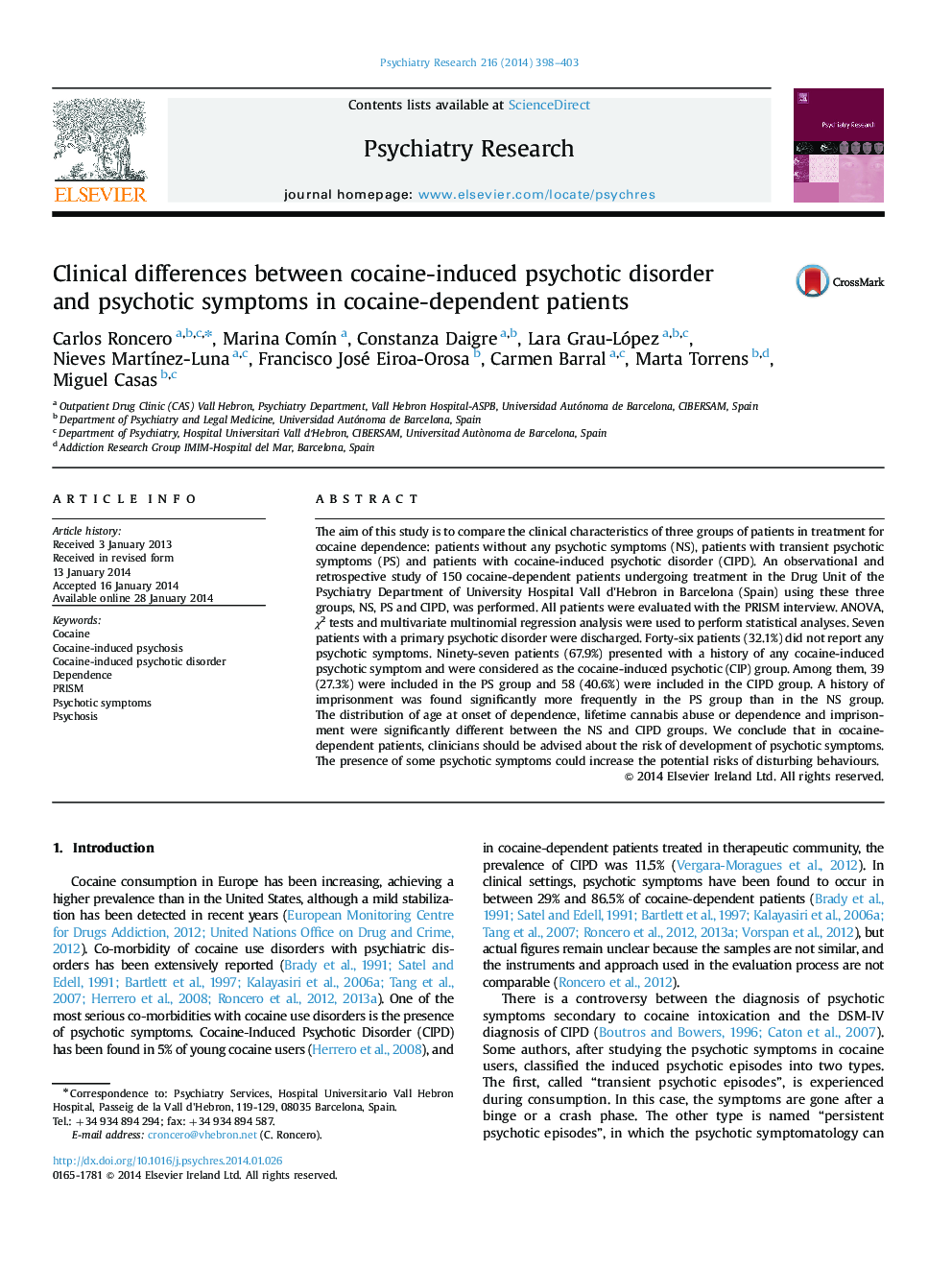| Article ID | Journal | Published Year | Pages | File Type |
|---|---|---|---|---|
| 10305001 | Psychiatry Research | 2014 | 6 Pages |
Abstract
The aim of this study is to compare the clinical characteristics of three groups of patients in treatment for cocaine dependence: patients without any psychotic symptoms (NS), patients with transient psychotic symptoms (PS) and patients with cocaine-induced psychotic disorder (CIPD). An observational and retrospective study of 150 cocaine-dependent patients undergoing treatment in the Drug Unit of the Psychiatry Department of University Hospital Vall d׳Hebron in Barcelona (Spain) using these three groups, NS, PS and CIPD, was performed. All patients were evaluated with the PRISM interview. ANOVA, Ï2 tests and multivariate multinomial regression analysis were used to perform statistical analyses. Seven patients with a primary psychotic disorder were discharged. Forty-six patients (32.1%) did not report any psychotic symptoms. Ninety-seven patients (67.9%) presented with a history of any cocaine-induced psychotic symptom and were considered as the cocaine-induced psychotic (CIP) group. Among them, 39 (27.3%) were included in the PS group and 58 (40.6%) were included in the CIPD group. A history of imprisonment was found significantly more frequently in the PS group than in the NS group. The distribution of age at onset of dependence, lifetime cannabis abuse or dependence and imprisonment were significantly different between the NS and CIPD groups. We conclude that in cocaine-dependent patients, clinicians should be advised about the risk of development of psychotic symptoms. The presence of some psychotic symptoms could increase the potential risks of disturbing behaviours.
Related Topics
Life Sciences
Neuroscience
Biological Psychiatry
Authors
Carlos Roncero, Marina ComÃn, Constanza Daigre, Lara Grau-López, Nieves MartÃnez-Luna, Francisco José Eiroa-Orosa, Carmen Barral, Marta Torrens, Miguel Casas,
